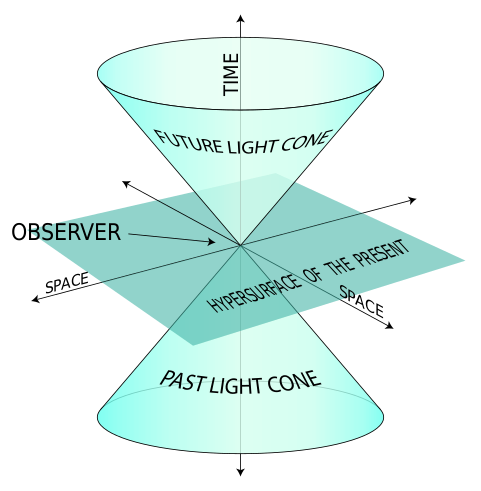Physics is like the study of existence itself. It's purpose is to determine questions of why. For example,
Why does the apple fall? Personally, I find it rather amazing that we are able to ask such questions in the first place. No other thing in existence that we know of is capable of asking the question,
"why?". It is a product of our consciousness to ask questions: A direct result of being
aware. Is it any wonder the most popular questions of our species has centered around science and divinity? Physics may only be one kind or type of science, but since it concerns reality itself (
"Why?")it automatically is a core component of all the other sciences:
Physics is super science.
Isaac Newton is given credit as the first true physicist. He described fall as an attraction between objects, such as the earth and the apple, which he called gravity.
For the two thousand years prior to Newton however, the dominating idea or reason given for why objects fall was that
they longed to be reunited with the earth. The person who proposed this was none other than the famous Greek philosopher, Aristotle.
Both Aristotle and Newton saw fall as an attractive force. Newton however, gave us a much more logical and organized explanation for the fall than his predecessor. Newton was able to describe fall, or gravity, using
mathematics.

Newton, so far as we know, was the first human to attempt to logically explain aspects of reality or existence with science. Hitherto to Newton, the use of science in determining reality was a virtual unknown. That is, there was no laboratory or structure for determining facts such as the process of elimination or deductive reasoning. You gotta think, people were pretty ignorant back then. Not exactly one of the high periods of our civilization or species, though I'm sure our descendants will probably feel the same about us in another thousand years so. But back to the point, mathematics is just one type or flavor of science. Albeit many consider it to be the capstone of all reasoning and logic it is not the only and history has proven even it is subject to error.


In it's purest description, mathematics, or more simply
numbers, is an abstract representation of some value. Some values are more complex than others and because of this need more math (given as numbers;letters;value,etc...) to explain them. The odd thing about it is that throughout history things we thought as a species or civilization were true about the nature of reality turned out to be incomplete at best
[e.g.Pi]. After Aristotle, Newton and his physics reigned uncontested for over two-hundred years until Einstein.
"If Newton is the father of physics, Einstein is the son."
Though there have certainly been a great number of many great physicist prior to Einstein, none came as close as him to toppling Newton. Einsteins theories and ideas have led us into a kind of revolution in thought as a species. More so than the son though, Einstein led us into a new kind of physics, thus he is more often called, "The Father of Modern Physics,". Some even go so far as to say, "Greatest Physicist Ever." He had many scientific discoveries but he is best known for his theories of relativity concerning
space time and light which he won the Nobel prize for. In case that you forgot, special relativity mainly states that the speed of light is the same no matter how fast you go. Basically, you can never catch or
catch up to light. (Which is really strange when you think about it. How is it that light is able to evade everything in the universe except a black hole?) General Relativity on the other hand describes Newton's fall, gravity, as a
geometric property of space and time, or space-time.

Gravity is seemingly a property of matter, but it's also the combination of the four dimensions. Basically, we all know that gravity is stronger depending on how big an object, such as a planet is. Jupiter's gravity is way stronger than the Earth's, and the moon's is about a fourth or twenty-five percent weaker. What I find interesting most interesting about general relativity is that it states that
curvature of space-time is a direct result of matter and energy moving through it (the 4 dimensions of length, width, height, and time).
- Space and Time; Space-Time

Space-time produces effects that mimic things like bubbles and rubber sheets. It's invisible to all known forms of direct detection so no one can really say for sure what it is but it can be thought of as the thing that surrounds and encloses the universe and provides a kind of structure throughout, like a membrane or bubble. Not much else is really known about space-time and it is currently one of the major problems in physics so I'm gonna take the opportunity to say what I think it is.
In it's most classical description, space-time is a reference for determining a point by determining it's length, width, depth, and time where time is roughly equivalent to speed since speed, specifically the speed of light 'c', is the ultimate value or measure of time. However, since I explained earlier that things we think are true tend not to be in the long run, so too is the physical constant for light (c).
My solution? As a person of science I have decided that there are certain principles in science that all other things manifest from. This is essentially the philosophy
[Philosophy] or stance of physics on the whole as well. Consider elementary particles for example, such as the electron. But the thing is, I consider everything but the fundamental's to be phenomena. To me phenomena is something not easily explained. So I attribute most behavior of matter other than elementary particles to be phenomenal or not quite definable. Everything else is just emanations or results of elementary particles (Sub-atomic physics?) combining anyways so I feel this is pretty accurate. What's more, all the elementary particles have some thing in common. I have thus chosen that the thing(s) they share in common form the foundation of my understanding of physics, and thereby reality. Most simply, this foundation is defined as charge in physics and takes the form of either
positive (+) or negative (-). More specifically, charge has many behaviors that manifest in all facets of existence. In fact, all matter is essentially a phenomena attributable to charge under this conclusion as all matter has charge.
What is Charge?

I actually don't know what charge is aside from calling it either positive (+) and negative (-), which are really just terms that don't mean anything except in relation to each other when you think about it. I unfortunately don't know of anyone that truly does know what charge is either... We do know a lot about effects and behaviors of charge, such as spin and flow, but exactly what it is or even why it exists in the first place is a complete mystery. Although, you could say charge is god or the energy known as god since it permeates everything
[All Pervading Energy = Universal Duality], as some do believe, this is considered by most to be a highly radical or fringe idea.
Various Names of Charge:
(+) & (-)
Chi
Prana
Bio-Electricity
Electromagnetism
The list goes on...
Charge is a fascination of science and divinity since the dawn of thought. Need I also say thought is also highly influenced by charge?
After all is said and done though charge is still a mystery but at least I've established some things about reality that I hope should allow you the reader decide what you think it is. Additionally I believe the fundamentals of physics can and will be solved/discovered by our species (Soon I think) but that the extra-fundamental's or all things not attributed to be elementary (
"The Phenomenons") will continue to provide a source of research, growth, and mystery for the conscious mind for eternity to come so long as we continue to ask our favorite question:
"Why?"
Wikipedia list of physics Phenomena
 Earth is a spinning Sphere traveling through space time. As it does so, it rotates or spins about circular trajectories. Any point on a spinning sphere produces a spiral or wave like pattern of all the points in space that it come into contact with as it spins as illustrated in the above animation.
Earth is a spinning Sphere traveling through space time. As it does so, it rotates or spins about circular trajectories. Any point on a spinning sphere produces a spiral or wave like pattern of all the points in space that it come into contact with as it spins as illustrated in the above animation. 

 Earth is a spinning Sphere traveling through space time. As it does so, it rotates or spins about circular trajectories. Any point on a spinning sphere produces a spiral or wave like pattern of all the points in space that it come into contact with as it spins as illustrated in the above animation.
Earth is a spinning Sphere traveling through space time. As it does so, it rotates or spins about circular trajectories. Any point on a spinning sphere produces a spiral or wave like pattern of all the points in space that it come into contact with as it spins as illustrated in the above animation. 



























